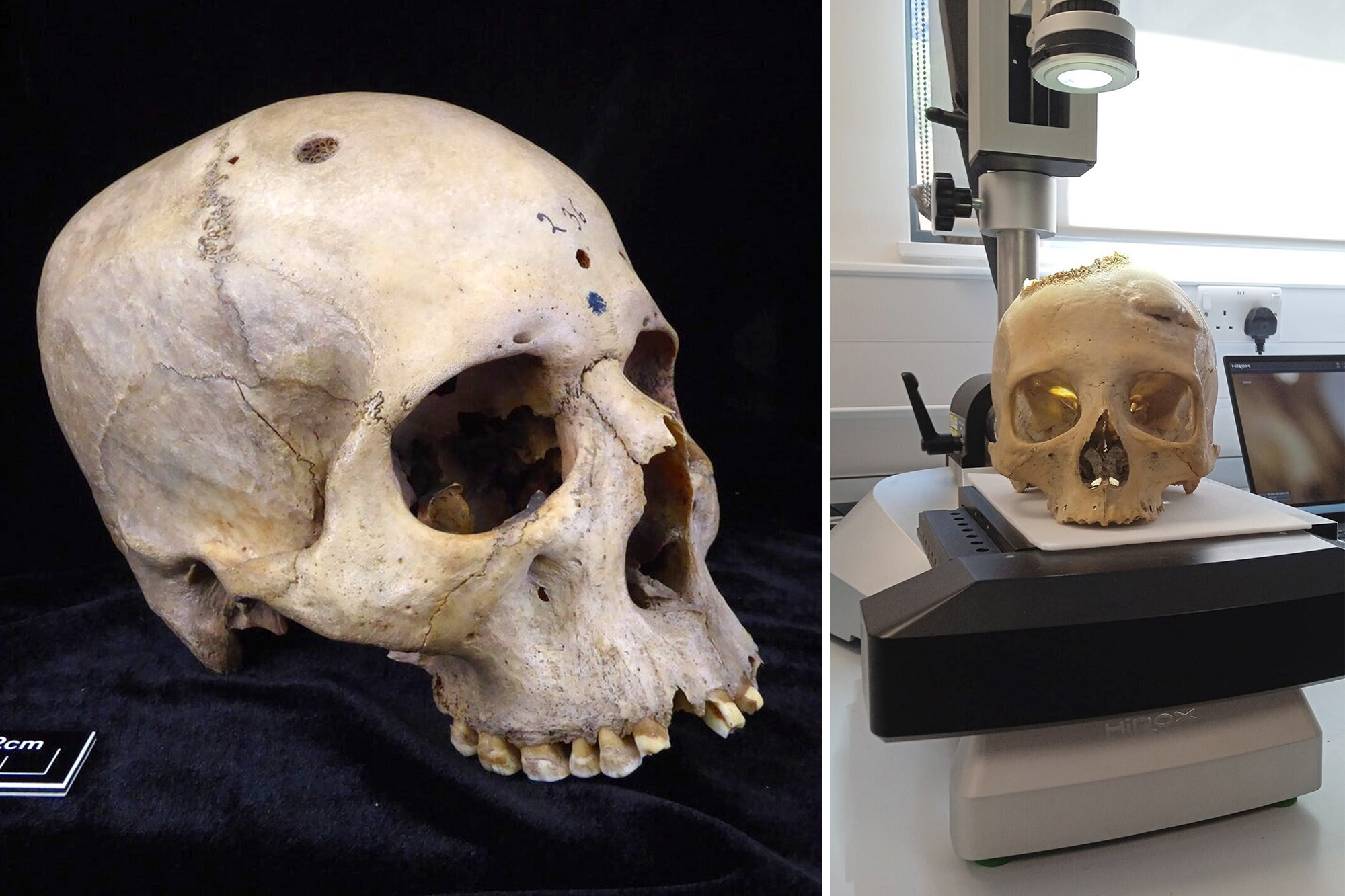
It’s a bone-a fide discovery.
An international team of researchers says it has found evidence of ancient Egyptians performing experimental treatments or medical explorations of human cancer more than 4,000 years ago.
“This is an extraordinary new perspective in our understanding of the history of medicine,” said Edgard Camarós, a paleopathologist at the University of Santiago de Compostela in Spain and lead author of the study, which was published Wednesday in the Frontiers in Medicine journal.
Camarós’ team examined two human skulls from the University of Cambridge’s Duckworth Collection in the UK. The first, of a man 30 to 35 years old, dates back to between 2687 and 2345 BC. The second one, of a woman older than 50, is from 663 to 343 BC.
Researchers noted that the man had a tumor — they observed about 30 small round lesions scattered across his skull. The researchers were stunned to discover that someone had cut around the lesions, seemingly with a sharp object.
“When we first observed the cutmarks under the microscope, we could not believe what was in front of us,” said Tatiana Tondini, a researcher at the University of Tübingen in Germany.
The Cancer History Project reports that the earliest description of human cancer dates back to Egypt from around 3000 BC. The Greek physician Hippocrates (460-370 BC) is credited with first calling the disease cancer.
The female skull, meanwhile, showed bone destruction from a cancerous tumor and two healed lesions from injuries.
The researchers theorized the trauma stemmed from a close-range violent incident with a sharp weapon, which would be surprising since most violence-related injuries are found in men.
“Was this female individual involved in any kind of warfare activities?” Tondini asked. “If so, we must rethink the role of women in the past and how they took active part in conflicts during antiquity.”
Researchers warned against drawing too many conclusions, since remains are often incomplete and there is no known medical history for either person. But they’re optimistic about what this discovery could mean for the global history of cancer.
“This study contributes to a changing of perspective and sets an encouraging base for future research on the field of paleo-oncology, but more studies will be needed to untangle how ancient societies dealt with cancer,” Camarós said.














